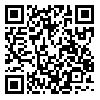BibTeX | RIS | EndNote | Medlars | ProCite | Reference Manager | RefWorks
Send citation to:
URL: http://ijeee.iust.ac.ir/article-1-1037-en.html
Photovoltaic systems integrated to the grid have received considerable attention around the world. They can be connected to the electrical grid via galvanic isolation (transformer) or without it (transformerless). Despite making galvanic isolation, low frequency transformer increases size, cost and losses. On the other hand, transformerless PV systems increase the leakage current (common-mode current, (CMC)) through the parasitic capacitors of the PV array. Inverter topology and switching technique are the most important parameters the leakage current depends on. As there is no need to extra hardware for switching scheme modification, it's an economical method for reducing leakage current. This paper evaluates the effect of different space vector modulation techniques on leakage current for a two-level three-phase four-leg inverter used in PV system. It proposes an efficient space vector modulation method which decreases the leakage current to below the quantity specified in VDE-0126-1-1 standard. furthermore, some other characteristics of the space vector modulation schemes that have not been significantly discussed for four-leg inverter, are considered, such as, modulation index, switching actions per period, common-mode voltage (CMV), and total harmonic distortion (THD). An extend software simulation using MATLAB/Simulink is performed to verify the effectiveness of the modulation technique.
Received: 2016/12/27 | Revised: 2017/08/24 | Accepted: 2017/04/23
| Rights and permissions | |
 |
This work is licensed under a Creative Commons Attribution-NonCommercial 4.0 International License. |








